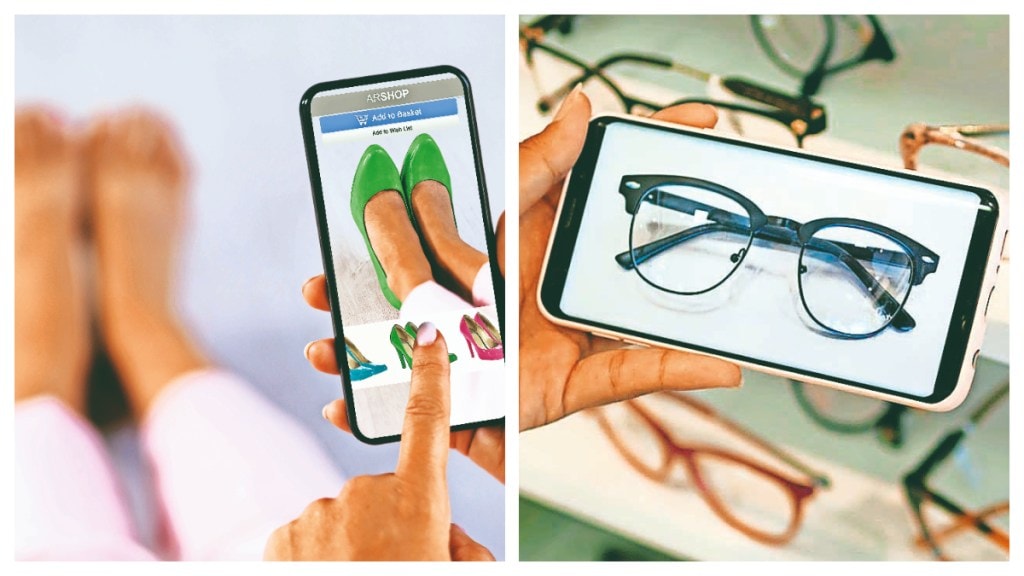In the age of technology, shopping is also undergoing a transformation. Forget crowded fitting rooms, long queues, and the uncertainty of online sizing charts — increasingly, consumers are stepping into a world where their smartphones double as mirrors, and a swipe on an app is all it takes to see how a jacket, pair of sneakers, or even a diamond necklace might look on them. Welcome to the era of virtual try-ons.
For years, augmented reality (AR) filters were seen as little more than a playful gimmick, something to add dog ears on Snapchat or sparkles to an Instagram selfie. But in 2025, those same tools are powering one of the fashion industry’s most promising revolutions. Imagine scrolling through Zara’s mobile app, pointing your phone at yourself, and instantly seeing how a linen dress drapes across your body. Or opening Lenskart’s app and trying on a dozen eyeglass frames without ever leaving your couch. For Gen Z, raised on Instagram filters and digital avatars, this is less novelty than second nature.
“I hate going to malls, and I don’t like guessing if something online will fit me. If I can try it virtually and it looks good, I’m way more confident about clicking to buy,” says Rohini Mathur, a 25-year-old fashion student, who uses Snapchat AR lenses to test out sunglasses and jackets.
When we talk of tackling the biggest pain point in online shopping, there is no doubt that e-commerce has brought fashion to our fingertips, but it comes with a catch. Industry estimates suggest that nearly 30-40% of fashion purchases online are sent back, often because the product looks or fits differently than expected. That’s not just a nuisance for customers, it’s a billion-dollar headache for retailers.
Virtual try-on technology aims to reduce this return spiral by letting shoppers preview items more realistically before committing.
It’s a promise that could save the industry millions while boosting consumer confidence. Walmart acquired Zeekit in 2021, a virtual fitting platform that creates digital avatars based on shoppers’ body measurements. Once built, these avatars can “try on” different outfits from Walmart’s clothing catalogue, showing not just how an item looks, but how it might drape, stretch, or cling.
Amazon, meanwhile, has rolled out its ‘Virtual Try-On for Shoes’ for US customers, to use their phone camera to see how sneakers and sandals look directly on their feet. Nike has gone a step further with Nike Fit, an AI-powered tool for North America that scans a shopper’s feet via smartphone camera and recommends the perfect shoe size, both online and in physical stores.
Luxury brands are experimenting too. Gucci’s Sneaker Garage lets users preview sneaker models in real time via its app, while its beauty division offers AR-powered lipstick and eyeshadow trials. In partnership with Snapchat, Gucci has even brought sneaker try-ons directly into users’ social feeds.
Closer home, Indian companies like Zithara.AI have launched what it calls India’s first AI-powered retail system for jewellers. The platform offers real-time customer profiling, predictive sales analytics, and a virtual try-on feature. While clothing and footwear are leading the charge,
virtual try-on is finding takers across industries. Eyewear giant Lenskart has seen significant traction with its AR try-on feature, which maps facial features and simulates frame fit with impressive accuracy, down to nose bridge placement and ear
alignment. Beauty brands are leaning on AR to let users preview lip shades or eye palettes.
But virtual try-on isn’t perfect. Lighting conditions, phone screen size, and even a shopper’s posture can affect how realistic an item looks. Fit in fashion retail is still tricky. Avatars can approximate body shapes, but the subtlety of fabric movement or the difference between a ‘snug’ and ‘tight’ fit can be hard to capture. Then there are data concerns. Accurate virtual fitting often requires users to input sensitive details such as body measurements or even full-body scans. Not all shoppers are comfortable sharing this information, and companies will need to tread carefully to ensure privacy and security.
Still, analysts predict that as technology matures, shoppers may soon have access to hyper-personalised AI stylists, digital wardrobes, and avatar-based fashion shows. Imagine an app that knows your exact measurements, suggests outfits that fit perfectly, and lets you wear them in both the real world and in the virtual space.









